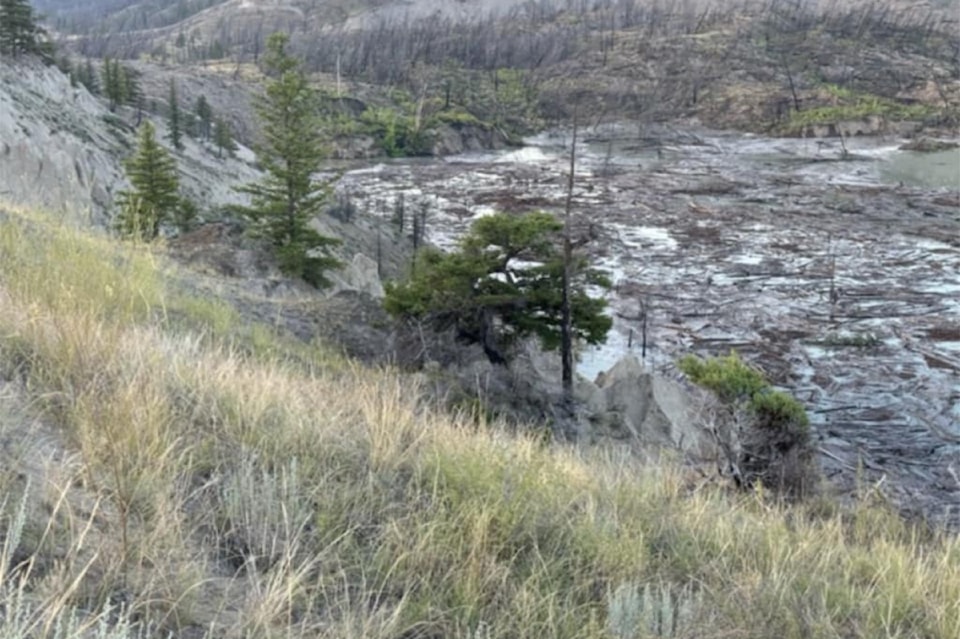Officials say the worst-case scenario from the Chilcotin River landslide would be about a 30-centimetre increase in the Fraser River when the water and debris reaches Hope in 29 hours.
B.C. water management executive director Connie Chapman provided two possible situations on what could happen when the water releases from the Chilcotin River landslide during a news conference on Saturday (Aug. 3). The landslide, , is an estimated 1,000 metres long, 100 metres in width and 30 metres deep.
Chapman said in the last day experts on the ground have noted the water rising in the lake behind the slide at a rate of roughly 22 centimetres per hour, which is a slight decrease from the first couple of days following the landslide.
Chapman said the lake level is expected to continue to rise.
A two-dimensional model was created to map out the worst-case scenario, which would see the water spill over the top of the damn within an hour.
From there is would take 1.5 hours for the water and debris to reach the Farwell Canyon Bridge and continue downstream. Chapman said to put it into perspective, a typical freshet flow is around 300 cubic metres per second, whereas this peak flow would be closer to 6,500 cubic metres per second.
"So quite the pulse of water would move through the system."
The next point would be the confluence where the Fraser River meets the Chilcotin, and Chapman said it would take roughly three hours for the material to make its way there. About 5,500 cubic metres of water would travel through per second.
However, there would be a decrease in the peak flow.
"The good news is, is that once we hit the Fraser River, this water and material has a significant amount of room to spread out and disperse."
By Lillooet, the Fraser River would only be 1.8 metres above what it's currently at. During a typical freshet, about 5,400 cubic metres would flow through per second ���߲��о���� this would be a peak of 1,100 cubic metres per second.
It would take about 21 hours for the material to make it to Lytton, and 24 hours to Boston Bar. At that point, it would be a one-metre increase in the Fraser River.
Once the material reaches Hope, it would be would be 29 hours after the overtopping of the dam. The Fraser would see about a 30-centimetre increase.
Chapman said the second scenario would be quite different.
In this case, the water would go over top of the dam and then take 24 hours to "slowly downward cut a new channel within the current material that is there, before that material fully gives way."
That means it would take closer to nine hours to reach the Farwell Canyon Bridge, with a peak height of only five metres. It would then take another two hours to reach the confluence of the Fraser and Chilcotin rivers.
By the time the water and debris hit the Fraser River downstream, flows would be under a metre.
Chapman emphasized this is still an "extremely dynamic situation," but this modelling does give officials a starting point of what could be expected.
"We do have confidence that this is going to be an over an over breach type failure versus a seepage failure."
Water, Land and Resource Stewardship Minister Nathan Cullen said that while Fraser River flows would be slightly higher than what is typical in a spring snowmelt season, the Chilcotin River will be above normal by a "significant margin."
He said that brings a significant risk to the ecosystem and the banks along the river. There are still risks, including further landslides upstream of the dam and potential slides downstream.
"We also know that debris may be part of the outflow, which can cause significant damage to the banks and to infrastructure along the way."



